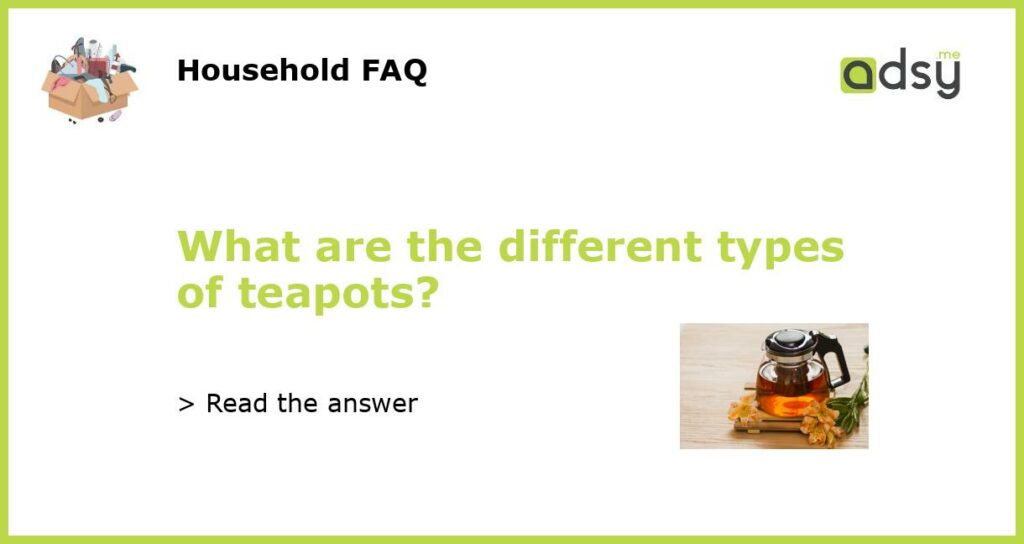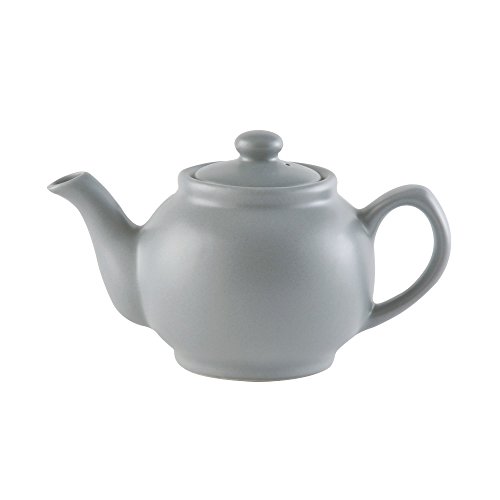Types of Teapots: An Overview of Different Styles and Materials
Teapots come in a wide variety of styles and materials, each with its own unique characteristics and benefits. Whether you’re a tea aficionado or simply enjoy a good cuppa, it can be fascinating to explore the different types of teapots available on the market. In this article, we will delve into five distinct categories of teapots, discussing their features, advantages, and some popular options to consider.
Ceramic Teapots
Ceramic teapots are a classic choice known for their heat retention properties. Made from clay and fired at high temperatures, these teapots are durable and relatively inexpensive. Ceramic teapots are available in various designs, making them a versatile option for both traditional and modern tea drinkers. Popular examples of ceramic teapots include the Japanese Kyusu, which features a side handle and a built-in strainer, and the English Brown Betty, renowned for its iconic round shape and ability to enhance the flavor of black tea.
Glass Teapots
Glass teapots provide a visually appealing way to brew and serve tea. The transparency of glass allows you to appreciate the colors and visual presentation of the tea leaves steeping. Glass teapots are often made from borosilicate glass, which is resistant to thermal shock and can withstand high temperatures. This type of teapot is an excellent choice for delicate teas such as green or white teas. Popular glass teapot options on the market include the Gongfu teapot, a Chinese teapot with a special handle for precise pouring, and the Bodum Assam teapot, known for its elegant design and removable infuser.
Cast Iron Teapots
Cast iron teapots, also known as Tetsubin, originated in Japan and are prized for their heat retention abilities. Made from iron, these teapots are incredibly durable and can last for generations if cared for properly. The cast iron material distributes heat evenly, ensuring that the tea stays hot for a more extended period. Many cast iron teapots are also adorned with intricate patterns and designs, making them an ornamental piece in addition to being a functional brewing vessel. Some popular cast iron teapots include the Japanese Iwachu teapot, celebrated for its craftsmanship and vibrant colors, and the Hobnail teapot, which features a distinctive textured design.
Yixing Teapots
Yixing teapots, also known as ZiSha teapots, are revered by tea connoisseurs. These teapots are made from a special type of clay found in the Yixing region of China. Yixing clay is said to have unique properties that can enhance the flavor of the tea over time. Due to their porous nature, Yixing teapots season with frequent use, absorbing the essence of the tea and developing a patina that adds depth and complexity to subsequent brews. Yixing teapots are typically unglazed and come in various shapes and sizes. Noteworthy examples include the Fanggu style, characterized by its square shape and elegant lines, and the Shui Pin style, known for its round shape and smooth texture.
Stainless Steel Teapots
Stainless steel teapots are a popular choice for their durability and versatility. They are resistant to corrosion and retain heat well, making them ideal for brewing tea. Stainless steel teapots are often double-walled, which helps to insulate the tea, keeping it hot for an extended period. These teapots are also easy to clean and maintain. Some notable examples include the Cuisinart Aura teapot, known for its sleek design and ergonomic handle, and the Ovente stainless steel teapot, which features a wide base and a removable infuser for easy brewing and cleaning.
Exploring the different types of teapots can enhance your tea-drinking experience and allow you to find the perfect teapot that suits your preferences and brewing style. Whether you prefer a teapot that retains heat well, showcases the visual elements of tea, or has special properties to enhance flavor, there is a teapot out there for you. Consider these five categories and their respective options the next time you are in the market for a new teapot.






